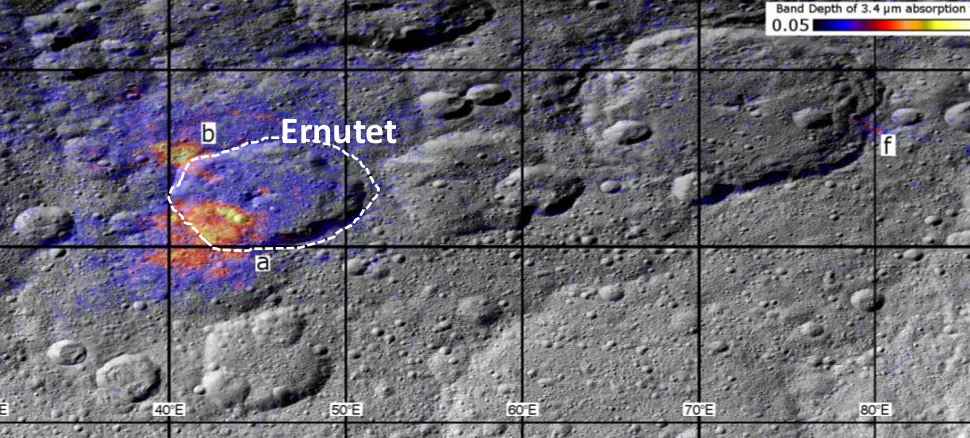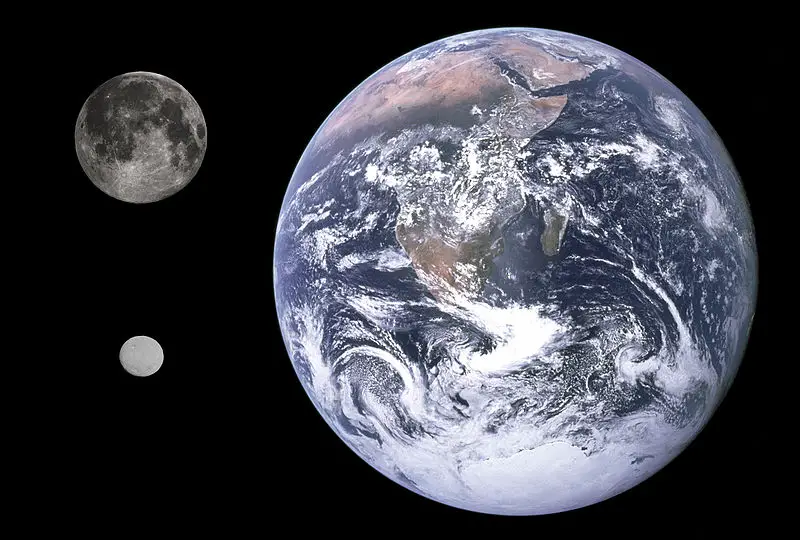
17th February 2017 Organic material identified on Ceres NASA's Dawn mission has found evidence of organic material on Ceres – the first clear detection of organic molecules from orbit on a main asteroid belt object.
Dawn has detected organic-rich areas on Ceres, the largest object in the asteroid field between the orbits of Mars and Jupiter. Scientists evaluating the geology of the regions conclude that the organics are most likely native to the dwarf planet. Data from the spacecraft suggest that the interior of Ceres is the source of these organic materials, as opposed to arriving via impacting asteroids or comets, according to a paper published today in Science. "This discovery of a locally high concentration of organics is intriguing, with broad implications for the astrobiology community," says Dr. Simone Marchi, senior research scientist at Southwest Research Institute in Texas and co-author of the paper. "Ceres has evidence of ammonia-bearing hydrated minerals, water ice, carbonates, salts, and now organic materials. With this new finding, Dawn has shown that Ceres contains key ingredients for life." Ceres is believed to have originated about 4.5 billion years ago, when planets and moons were forming. Studying it can help to explain the origin, evolution and distribution of organics across the Solar System. Data from Dawn's visible and infrared mapping spectrometer show an unusually high concentration of organic matter close to the 50-km diameter Ernutet crater in the northern hemisphere of Ceres. The distribution and characteristics of the organics seem to preclude association with any single crater. The largest concentration appears to drape discontinuously across the southwest floor and rim of Ernutet and onto an older, highly degraded crater. Other organic-rich areas are scattered to the northwest. While other scientists looked at the distribution and spectra of the materials, Marchi focused on the geological settings.
"The overall region is heavily cratered and appears to be ancient; however, the rims of Ernutet crater appear to be relatively fresh," Marchi said. "The organic-rich areas include carbonate and ammoniated species, which are clearly Ceres' endogenous material, making it unlikely that the organics arrived via an external impactor." Ceres shows clear signatures of pervasive hydrothermal activity, aqueous alteration and fluid mobility, so the organic-rich areas may be the result of internal processes. Dawn scientists will continue to study the dwarf planet to identify a viable method for transporting such material from the interior to the surface in the pattern observed. ---
Comments »
|








